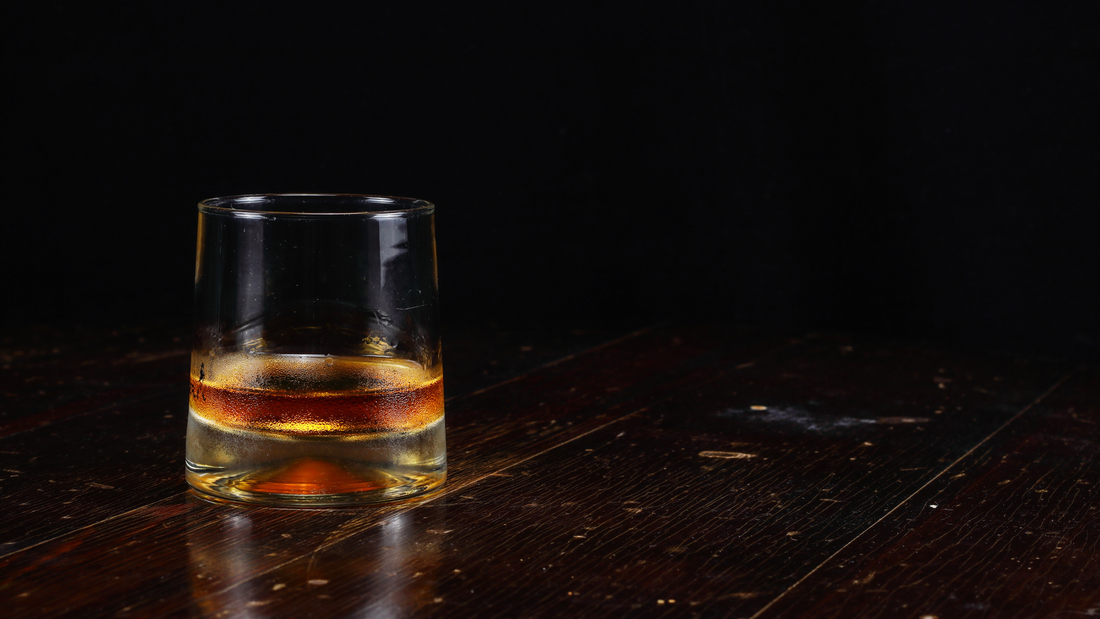
A glass beside the groove
By Rafi Mercer
I’ve always liked the way a good whisky sits beside a record. There’s something about the two together — the weight of the glass in your hand, the warmth that spreads as the music unfolds — that feels almost designed. Maybe that’s why so many of the original listening bars in Japan built whisky into the ritual. You sat in a dark room, the lights low, the speakers humming, and there it was: a measure of Yamazaki or Hibiki, neat, waiting patiently while the record turned.
The pairing makes sense. Whisky isn’t something you rush. Neither is deep listening. Both ask you to slow down, to notice. The way a note lingers in the air, the way smoke curls in the glass. The first sip of a peaty single malt is not so different to the first bass note from a horn speaker: it hits you full in the chest, then unfolds with complexity you can only appreciate if you give it time.
In Tokyo or Osaka, the tradition grew naturally. Imported jazz records, imported Scotch, both rare, both cherished. The listening bar became the place to taste and to hear — a double act of indulgence and devotion. Over the years, the whisky lists grew as long as the vinyl shelves, each bottle with its own character, each dram matched to the mood of the night.
But now, as the listening bar concept travels the world, I wonder how the ritual will change. In Berlin, you might find a natural wine beside the turntable, cloudy and funky as the record spinning on the platter. In Brooklyn, maybe it’s craft beer, chosen for its hops as carefully as the record for its bassline. In London, a bartender might pour a gin and tonic as crisp as the hi-hat on a house track. The global spread of listening culture doesn’t mean whisky will disappear — far from it — but it does mean the pairing is no longer fixed. The glass on the counter may shift with the city.
Still, whisky holds a special place. It carries a sense of occasion. A whisky isn’t background; it’s foreground. Just like the music. And maybe that’s why the two belong together. You don’t order whisky to get drunk quickly. You order it to sit, to savour, to notice how it changes with each sip — much like how a record changes each time you listen.
What I love is that no matter the drink, the essence remains: the idea that listening deserves company. That a glass, whether whisky, wine, or water, is not just refreshment but part of the atmosphere. It slows you down, grounds you, reminds you to be present. The drink is never the star, just as the room is never the star. The record is the star. But everything around it — the glass, the light, the company — sets the stage.
So yes, whisky will always be tied to the origin story of the listening bar. But as the culture spreads, I think it will loosen. The point isn’t to copy Japan exactly. The point is to carry the spirit: the care, the patience, the devotion to sound. Whether you raise a glass of whisky, wine, tea, or soda doesn’t matter. What matters is that you raise it with intent, with attention, and with the record spinning in front of you.
At the end of the day, music and drink share the same magic. Both alter perception, both bring people together, both linger long after they’re finished. That’s why I’ll always keep a bottle on the shelf beside the turntable. Sometimes whisky, sometimes not. But always something to remind me that listening is a ritual, and rituals are better with a glass in hand.
Rafi Mercer writes about the spaces where music matters. For more stories from Tracks & Tales, subscribe here, or click here to read more.


